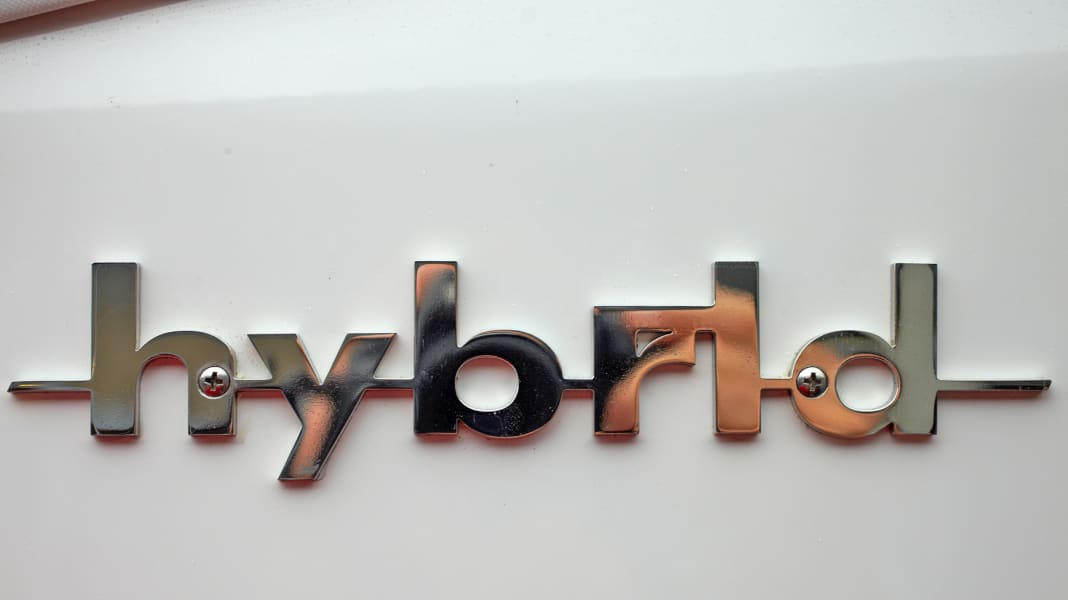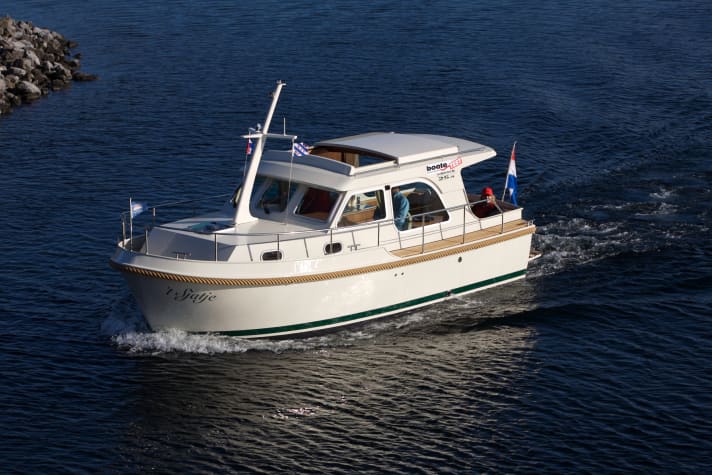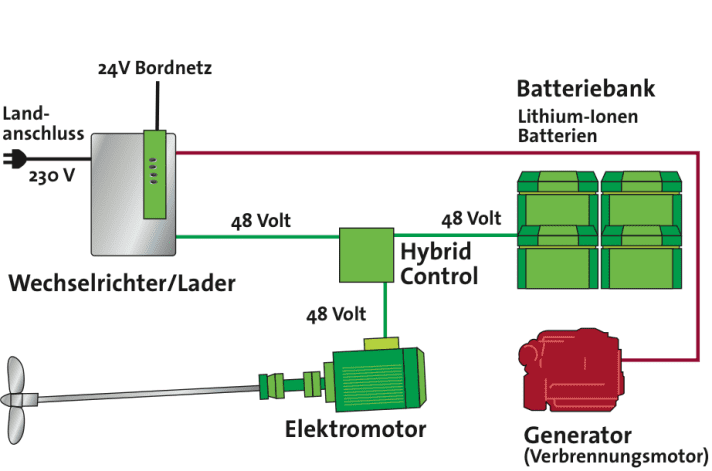

During the 2010 season, we had the opportunity to drive two boats with hybrid drives: Linssen Grand Sturdy 25.9 Hybrid and Frauscher 909 Benaco Hybrid. We travelled with the Linssen on the Maas in the Netherlands. Her system consists of (see also drawing) an electric motor (7.5 kW) with shaft system, diesel generator, charging/control unit and battery banks made of Li-Ion batteries (lithium ions) with a usable energy of 13.8 kWh (at 80 % extraction).
Advantages of this type of battery compared to the cheaper AGM (Absorbed Glass Mat) batteries: longer service life, smaller dimensions with the same power, deeper discharge possible and more constant power output. Disadvantage: higher purchase price. However, Linssen has calculated the total operating costs of the two battery types over their service life and comes to an astonishing conclusion: with purchase price/actual energy, this results in €17,960/27,520 kWh = €0.65/kWh for the Li-ion batteries and €3080/2160 kWh = 1.43 kWh for the AGM.

The batteries on the Linssen are charged either from the shore connection with a 230 V/16 A socket or from the diesel generator. With a residual charge of 20%, the charger needs around 12 hours to bring the Li-ion back up to 100%. The Mastervolt generator (Whisper series) has an output of 3 kW and supplies the battery bank with the necessary power in an emergency or on longer trips.
The electric motor is operated via a transverse lever on the driver's platform. Easy-to-read panels with digital displays provide information about the power output, battery status, speed and generator operation.
If you carefully push the lever forwards, the Linssen slowly starts to move at 250 rpm (1.5 knots) and the boat purrs along at 42 dB/A. If you don't just want to creep along, but also want to make some headway, you can let the engine turn at 1000 rpm and pull along at 5.1 kn at a quiet 61 dB/A. The motor then requires a current of 145 A.

With a "tank charge" of 13.8 kW, this results in around 2 h travelling time and a good 10 nm range. The full load speed (1100 rpm) is 5.7 knots, which shortens the journey time by another 3/4 hour. The Linssen becomes a "long-distance runner" at 600 rpm and 3.2 knots. In this situation, the driving noise is 57 dB/A and 30 A flows through the supply line to the electric motor. Exactly the power that the installed generator delivers to make the system independent of the available battery charge. However, a complete 80-% battery charge is sufficient for a good 9 hours of driving time, or in other words for almost 30 nm, even without the use of a generator.
The Comparison with the combustion version shows that with the 33 hp diesel and 100-litre tank, you can travel 139 nm at a good 5 kn instead of the 10 nm mentioned above. At speeds of around 3 knots, the ratio is 400 nm to 30 nm. In other words, a huge range advantage for the Linssen with a diesel engine. The energy costs for 1 nm are the other way round: When travelling economically, a nautical mile costs around 37 cents (from the socket) for an electric drive and around twice as much for a diesel. The manoeuvring behaviour has not changed, but you have to get used to the low noise level, as you can no longer control the speed with your ear.
Conclusion: The Linssen 25.9 Hybrid (198,550 euros) is a good alternative for cruising on lakes, canals and slow-flowing rivers. On fast rivers, such as the Rhine, however, the hybrid version is faster than its 53,550 euro cheaper "sister", which has a maximum speed of 6.5 knots with the diesel.
